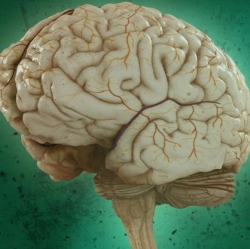
A man has used thought alone to control nanorobots inside a living creature for the first time. The technology released a drug inside cockroaches in response to the man’s brain activity, a technique that may be useful for treating brain disorders such as schizophrenia and ADHD.
Getting drugs to where they need to be exactly when you want them is a challenge. Most drugs diffuse through the blood stream over time, and you’re stuck with the side effects until the drug wears off.
Now, a team at the Interdisciplinary Center, in Herzliya, and Bar Ilan University, in Ramat Gan, both in Israel, have developed a system that allows precise control over when a drug is active in the body.
The group has built nanorobots out of DNA, forming shell-like shapes that drugs can be tethered to. The bots also have a gate, which has a lock made from iron oxide nanoparticles.
The lock opens when heated using electromagnetic energy, exposing the drug to the environment. Because the drug remains tethered to the DNA parcel, a body’s exposure to the drug can be controlled by closing and opening the gate.
To get the DNA bots to respond to a person’s thoughts, the team trained a computer algorithm to distinguish between a person’s brain activity when resting and when doing mental arithmetic.
The team then attached a fluorescent drug to the bots and injected them into a cockroach sat inside an electromagnetic coil. A person wearing an EEG cap that measures brain activity was then instructed either to do mental calculations, or rest.
The cap was connected to the electromagnetic coil, switching it on when the man was calculating and off when he was resting.
By examining when fluorescence appeared inside different cockroaches, the team confirmed that this worked.
The algorithm could be trained to track other types of brain activity, says Sachar Arnon, a member of the team at the Interdisciplinary Center. “It could track brain states that underlie ADHD or schizophrenia, for example. It could be modified to suit your needs.”
The idea would be to automatically trigger the release of a drug when it is needed. For example, some people don’t always know when they need medication, before a violent episode of schizophrenia, for instance. If an EEG could detect it was coming, it could stimulate the release of a preventative drug.
Because the bots can open and close when required, the technology should minimise unwanted side effects. Tweaking the DNA bots could also ensure they only target specific cells in the body, minimising harmful interactions elsewhere in the body. This could be done by attaching molecules to the surface of the bots that bind to specific receptors on the outside of certain types of cell.
But the technology isn’t ready to be used in humans yet. To work, the setup needs a smaller, more portable method of measuring brain activity, something Arnon says isn’t far away. The team envisions a person wearing a small, hearing aid-like EEG device to monitor brain activity and detect when drugs are needed, for example, when a person with ADHD’s concentration begins to lapse. A smart watch would then create the electromagnetic field required to release a dose of Ritalin.
Such a combination of devices could be used to treat depression and other brain conditions that are difficult to treat. It could also allow people to actively trigger when they want a drug to be released by summoning specific thoughts.
“People could take this in all different directions,” says Arnon. “Imagine if you could deliver the exact amount of alcohol that you wanted to keep you in a happy state but not drunk. Kind of stupid, but this could happen. I think we’ve just scratched the surface.”
